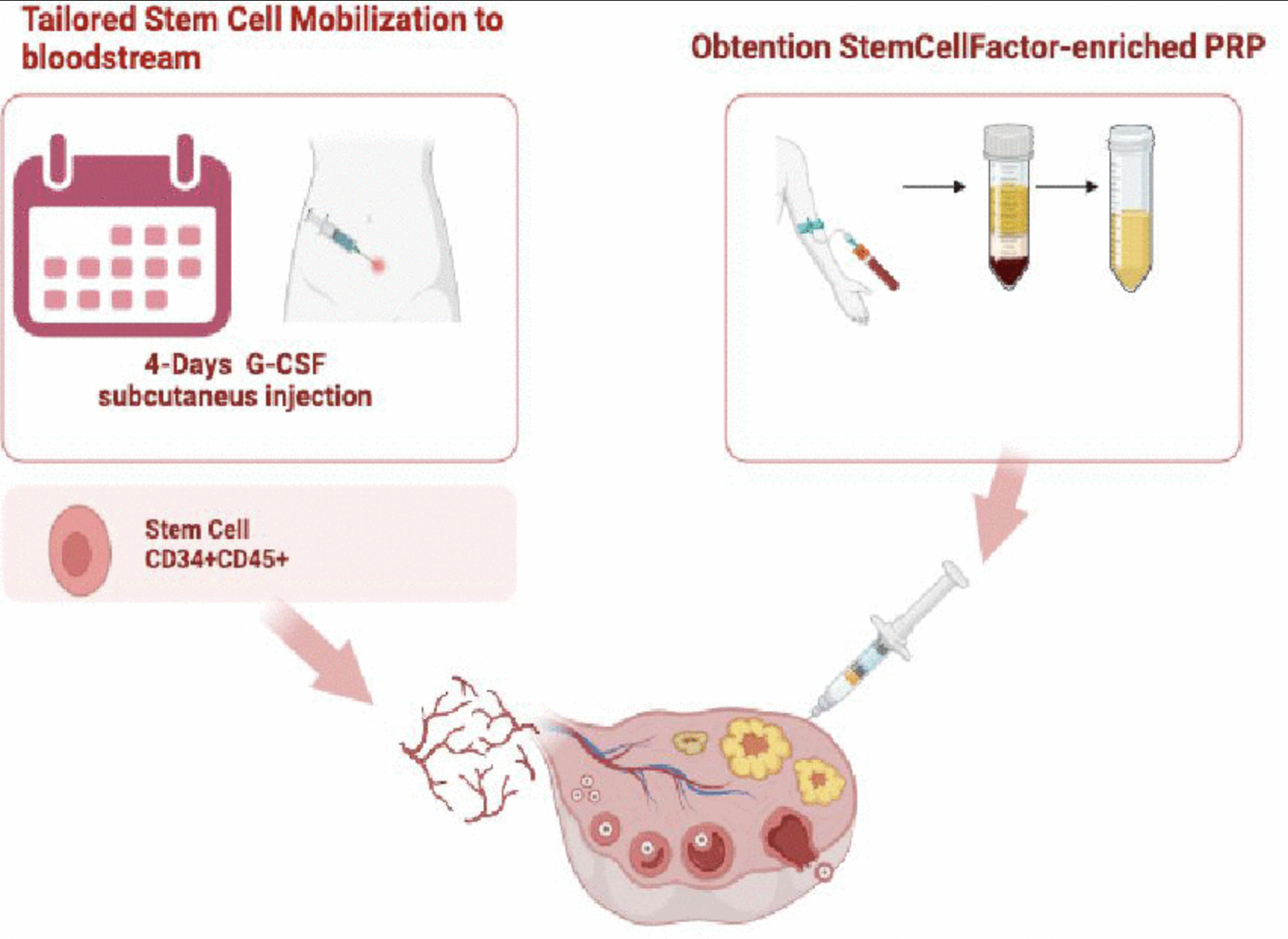Dr. Amparo Santamaria describes a research paper she co-authored in Volume 17, Issue 6 of Aging (Aging-US), titled “Enhancing oocyte activation in women with ovarian failure: clinical outcomes of the Stem Cell Regenera study using G-CSF mobilization of peripheral blood stem cells and intraovarian injection of stem cell factor-enriched platelet rich plasma in real-world-practice.”
Behind the Study is a series of transcribed videos from researchers elaborating on their recent studies published by Aging (Aging-US). Visit our YouTube channel for more insights from outstanding authors.
______
Hello everyone. My name is Amparo Santamaria and I am a hematologist at the Reproductive Hematology Unit at IVIRMA Alicante Clinic in Spain. I’m delighted to connect with you today to share the highlights of our recent research conducted with my colleagues, Ana Ballester and Dr. Manuel Muñoz from the Gynecology department at IVIRMA Alicante.
We recently published our article in the journal Aging. As you can see the title, “Stem Cell Regenerative Study.” This study evaluates a new regenerative medicine protocol for women with ovarian failure, including those with poor ovarian response, diminished ovarian reserve, and premature ovarian insufficiency, conditions that have traditionally offered very limited hope for women who wish to become mothers.
And that is what inspired us to take on this project. Every day we met women whose dreams of motherhood are threatened by ovarian aging or failure. Traditionally, fertility treatments often bring little hope for these patients. But recent advances in regenerative medicine and reports of cancer patients regaining ovarian function after a stem cell mobilization with G-CSF led us to ask, can we use these stem cells factors, growth factors be used to activate dormant ovarian follicles and restore fertility?
Let me share the most remarkable parts of our work. We included 145 women aged 26 to 44, all diagnosed with ovarian failure. The treatment consisted of two steps. First, we immobilized hematopoietic stem cells from the bone marrow into the bloodstream using G-CSF. Then we injected directly into the various, the prepared platelet-rich plasma enriched with the stem cell factors.
The results are striking in terms of effectiveness. Oocyte activation was achieved in 70% of women. Also, what other surprises we made. Age was not a barrier. Women up to 44 years old benefited with no significant difference in activation rates between younger and older participants. Also, the personalization of the treatment. Nearly 30% of women needed personalized adjustment to their G-CSF dosage, highlighting the importance of individualized occur by a hematologist in this setting.
Also, we found a moderate positive correlation between white blood cells and the number of stem cells that we observe, which may help us to optimize future protocols in the future. These amazing results, as you can see just in one shot, are amazing. Two out of three women without any hope of activation that were ovodonation, they achieve activation. Another amazing results in one shot are the pregnancy rates after activation. One out of three women achieve a pregnancy.
In terms of safety, we didn’t found any severe adverse effects, and the symptoms were self-limiting and only 50% had some mild symptoms. As you can see here, this treatment is effective in real world. Also, are consistent with the studies in mice. The limitations, of course, are that is a retrospective study. We don’t have a control group and all this stuff that always limited studies in women.
But the innovative treatment and the innovation in this treatment are very important because our enriched PRP contains powerful soluble stem cell factors that already has shown the benefits in mice. Our study is the first to show these impressive results in real women, not just in mice. And this is just the beginning. While animal studies have identified several provisional soluble factors, our studies already translating these findings into real world results for women.
Going forward, we plan to identify and characterize the most effective soluble stem cell factors as thrombospondin or KID Ligand. Also, to optimize the composition of a stem cell factor enriched PRP for even better clinical outcomes, and of course to conduct long-term follow up to track this study in more women. This research is to re-understand which patients benefit the most and why.
So in conclusion, this study is effective and safe for oocyte activation. This is a promising alternative to oocyte donation. The key takeaways, extensive regenerative treatment achieved all-site activation in nearly 70% of women with ovarian failure. Pregnancy was possible for women in one out of three and previously women with little hope of known or having their own child. The treatment was safe and well-tolerated with no serious adverse events, always with control of our hematologies. And our approach, in conclusion, it’s already making a difference in real women, not just in animal mothers.
Thank you very much and my acknowledgments are for my team colleagues at IVIRMA Alicante Clinic, also at IEB International, and of course to the women who has participated in this study, the happiness to see women with their own children. Thank you very much.
Click here to read the full research paper published by Aging (Aging-US).
___
Aging (Aging-US) is an open-access journal that publishes research papers monthly in all fields of aging research and other topics. These papers are available to read at no cost to readers on Aging-us.com. Open-access journals offer information that has the potential to benefit our societies from the inside out and may be shared with friends, neighbors, colleagues, and other researchers, far and wide.
For media inquiries, please contact [email protected].
